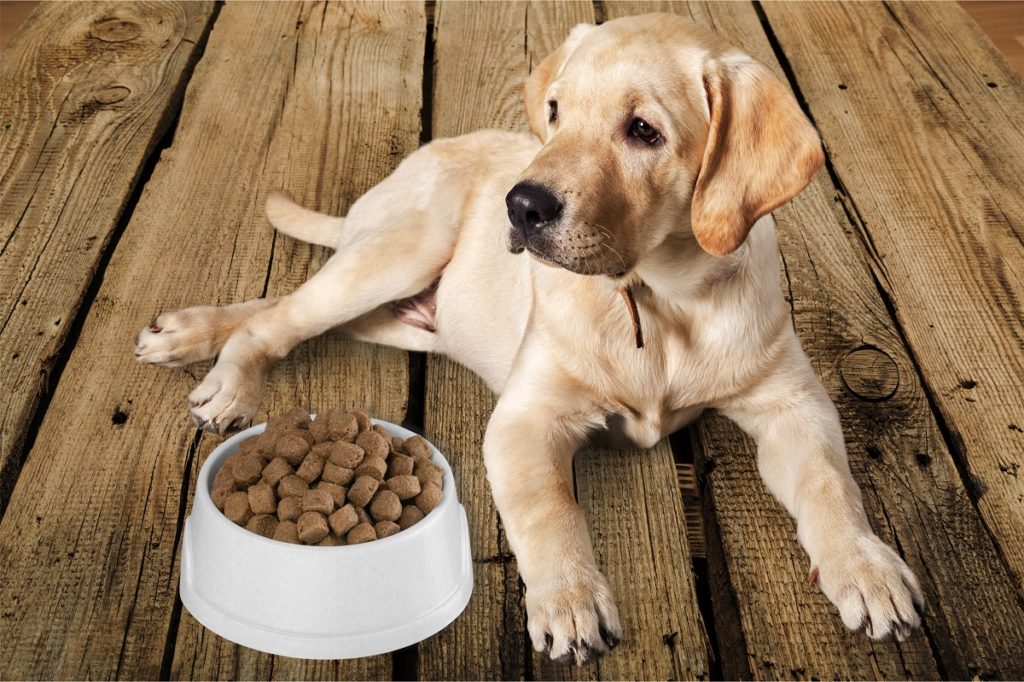Ever given any thought to the food you purchase for your four-legged friend? As a society, we’ve become increasingly aware of the importance of food in regard to our overall health and well-being. Factors such as quality and quantity of ingredients and an increased focus on a balanced diet have led us to make more informed decisions when it comes to food. When it comes to dogs, we typically choose between dry and wet foods, but what are the differences between the two? Is one better than the other? It depends. Every dog is different, so if you haven’t looked further into what’s best for yours, it’s not too late to start! Both dry and wet foods have their advantages, so which should you choose?
Dry Food
There are some obvious pros to dry dog food. First off, it’s convenient – simple as that. It’s easy to store and you can leave it out in a bowl for longer periods of time without spoiling, allowing your pup to eat at their own pace. From an economical perspective, dry food is also superior. It’s tough to say no to a big bag of dry food that provides two to three times the quantity at less than half the price as wet food. Furthermore, what’s often overlooked, dry food also tends to have less of a negative impact on dental hygiene.

While it’s difficult to say if dry food can actually clean your dog’s teeth (this is the subject of much debate), some brands are trying to achieve this goal. They provide dry food shaped in a way that’s intended to help keep your pup’s teeth cleaner as he chews. Last, but not least, are you looking to train your dog to sit or stay? Dry food often makes for a better training treat. It’s certainly a lot easier to toss your furry friend a dry treat rather than a handful of wet food.
So with all these advantages, are there any downsides of dry food? Well, the answer lies in the question – it’s dry. Dry food provides less moisture for your pup. This is important as some dogs require more moisture, especially if they are under the weather, frequently spend time outside in warmer climates, or are simply just getting older. Wet food also tends to have higher levels of animal-based proteins which promote growth and development.
Wet Food
Where dry food falls short, wet food excels. Wet, canned food typically contains more meat protein, more natural fats, and less carbohydrates than it’s dry food counterpart. Also, unlike dry food, it helps hydrate your four-legged friend. Wet food tends to be more appetizing, too. Plus, because it’s wet, it also helps make your dog feel fuller, faster thus regulating the amount he eats, which helps prevent overeating. A canine who is older, ill, or has lost sensitivity in his smell will respond better to the more potent and pleasant scent of wet food. For dogs who have trouble chewing or are missing teeth, wet food is clearly a superior option as it’s much easier on the teeth and jaws. Wet foods are generally more efficient in providing dogs the appropriate vitamins, minerals, and proteins they need.
Ironically, while wet food seems to pick up the slack dry food leaves behind, it does lack some of the benefits dry food provides. For example, regular consumption of wet food can potentially lead to dental problems. Furthermore, from a practicality standpoint, wet food falls way short. Once the can has been opened, it has a much shorter shelf life. Also, it’s typically more expensive and it generally has to be purchased in smaller quantities. Oh, and one more thing… it’s messier!
What to Choose?

At the end of the day, one is not necessarily better than the other. As you can see, there are several pros and cons to both dry and wet food. Not to mention, some dogs simply prefer one to the other. Ultimately, whichever option you deem best for your pup, it’s important to ensure he is getting the appropriate level of nutrients in his meals. Read the packaging – this is key. Check the ingredients to see what’s actually in the food your buying for your precious pup.
Sometimes a combination of wet and dry food can be a good way to give your dog the best of both worlds. When in doubt, consult your veterinarian to see what’s recommended based on your dog’s breed, current health, and age. With some basic knowledge on the differences between dry and wet foods, a keen eye for ingredients, and your vet’s advice, you can make confident choices that will keep your dog happy and healthy. For those times between meals look to our CBD treats for dogs for flavored biscuits with organic hemp derived CBD.
Sources:
“Canned or Dry Dog Food – What’s the Better Choice?” Dog Food Advisor, 4 July 2012, www.dogfoodadvisor.com/choosing-dog-food/canned-or-dry-dog-food/.
Leonardi, Lauren. “Wet or Dry Dog Food: Which Is Better?” PetCareRx, PetCareRx, 7 Feb. 2013, www.petcarerx.com/article/wet-or-dry-dog-food-which-is-better/838.
“Wet vs Dry: Should I Feed My Dog Wet or Dry Food?” K9 Of Mine, 10 Jan. 2018, www.k9ofmine.com/wet-vs-dry-dog-food/.
“What Is the Difference between Wet and Dry Food?” MedicAnimal, www.medicanimal.com/What-is-the-difference-between-wet-and-dry-food%3F/a/ART291681.




